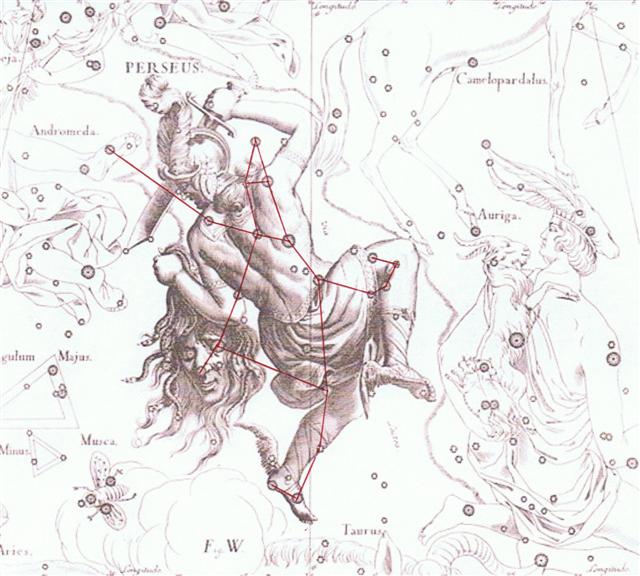We must look at the last pair of glyphs in line Ca2:
In Greek myth the hero Perseus cut off the head of the gorgon Medusa, and Algenib is the bright star at the right side of Perseus, significantly bathing in light. Men who looked the gorgon in the face were turned into stone (cold and immobile), but Perseus at spring equinox found a way to defeat her:
At Ca2-24 Metoro said hia mai, which means he told Bishop Jaussen to 'count hither'. Possibly it was to call attention to the fact that nowadays Algenib Persei was not rising at the March equinox but had glided ahead in the year with 50 days. However, probably it was not so. Metoro now and then in his readings for Bishop Jaussen reminded him of how important it was to count (hia). In a non-alphabetic text the means of communication was not to repeat words which had been written down but instead to think in the way which was hinted at by the pictures and numbers. To understand is not to again and again repeat like a parrot but to slowly grow by working hard. Consequently I should not try to explain why Metoro said hia mai at this place, but certainly it was a spot in the text which was important. Perhaps we should roughly translate Metoro's hia with: Man, 'read' for yourself! |


